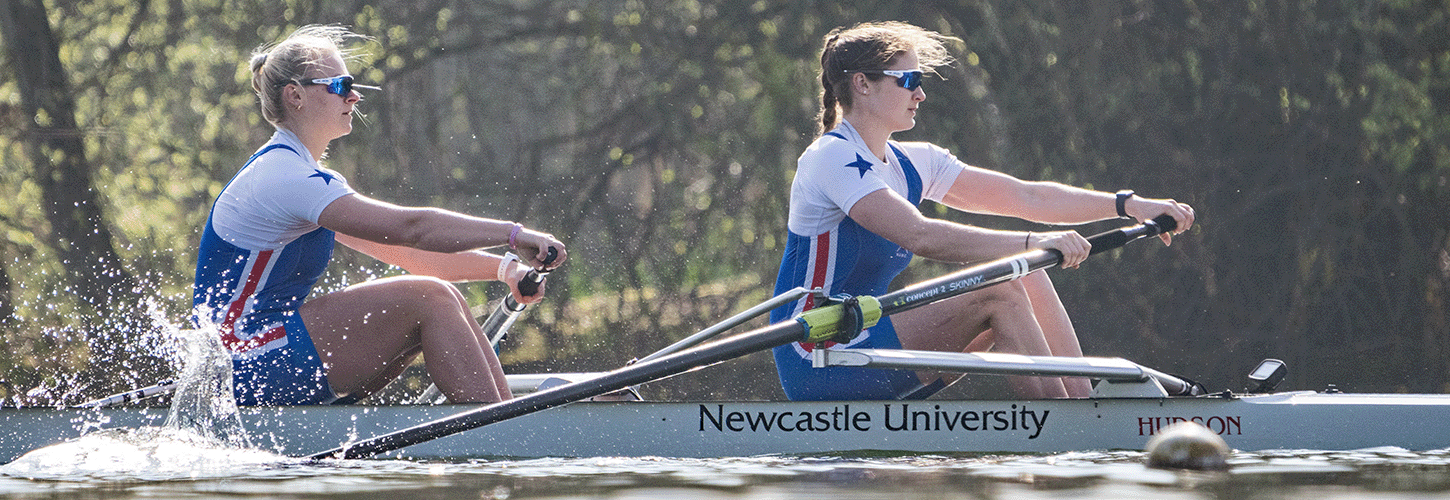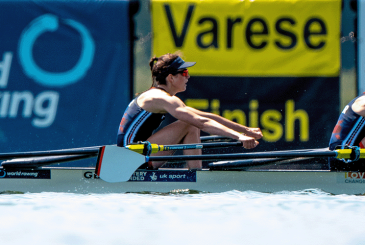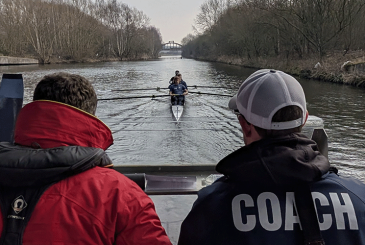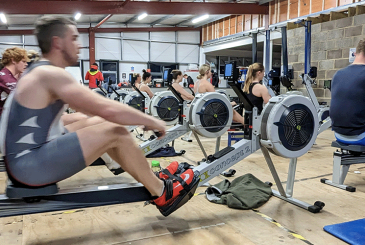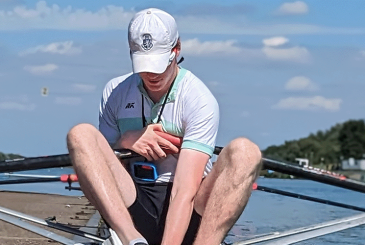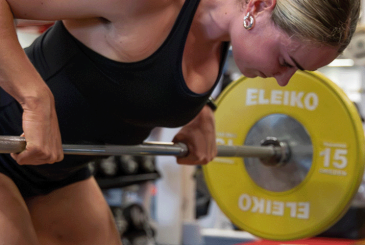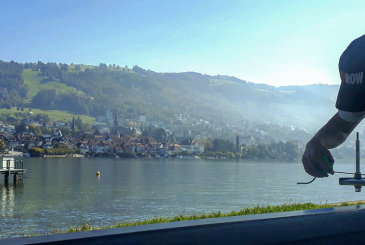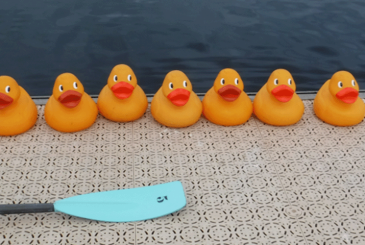Athlete assessment involves judging between your athletes, generally to select crews based on performance. British Rowing Performance Satellite Coach Ben Reed explains the range of assessment methods available to club coaches.
Assessments are rarely done at the time of the main event, nor over the race distance, nor in the same boat type. On the face of it, this would appear to be ill-designed but there seems little alternative. You need to select crews well in advance of the main event so they can gel, assessment in smaller boats than the race boat eliminates other variable factors, and seat racing over 2k would take a lot of time as well as requiring access to a suitable venue.
In general:
- Define the selection process and criteria as early as possible. The season will inevitably consist of a prolonged initial period of training, where ranking data will be generated, capped by a selection event of some sort. You need to be clear what part both sections play in final selections. Will the top ranking athletes from training be pre-selected? Will only the top 10 or 12 in the rankings be eligible for seat racing for the eight? Can data from training be taken into account, or is it all-or-nothing on the seat racing?
- Decide when you will make selection decisions. Earlier in the season will allow the selected crew to gel and develop boat speed together, while later selection will give athletes a chance to develop, and perhaps lead to a faster boat that way.
- For sweep, how will you manage those who can row on both sides? One way is simply to ask those rowers in question to pick a side and trial on that. If you genuinely think you need to allow someone to trial on both sides, you could select one side first, then the other.
Tip
Remember this will be a stressful time for your athletes, and will put a strain on your relationship with them. You switch from being their coach, whose role is to support them, to selector, perhaps ending their hopes for the season.
On-water assessments
There are three main types of on-water athlete assessment.
Time trials in single sculls
The advantage of this format is that your entire squad is ranked in one session.
Typically this would be used to gather data during training, and could be repeated weekly or monthly, rather than as a selection event. Decide over what distance you want to run the time trial, in which stream direction, whether to cap the rate and at what number, and what starting gap you want between the boats.
Practically you may struggle to find enough singles for all your athletes from club stocks, so this will only work for squads that have a high degree of boat ownership. Alternatively you could rotate athletes through different boat types over several weeks, and average the %GMT they achieve in each one.
A doubles or pairs matrix
By moving to doubles or pairs you are starting to see how rowers work in combination with others – clearly critical for crew boats.
This format can only be used when you have matched boats and athletes whom you trust to steer the boats consistently over the rounds. Its advantage is that it produces a rank for all rowers involved in the process.
You need as many runs as will cover all crew combinations. For doubles, you would generally allow each combination to choose which seats they sit in, while for pairs, bows tend to stay with the boats, while the strokes switch round.
These races can be run side-by-side if you have access to a laned course, but in reality most clubs will have to run them line astern, and I would suggest upstream as the bank then guides the steerers.
One decision you need to make is whether you will total up the times for each athlete, or award points for each round and total those up. The former rewards margins within each race, while the latter only looks at positions.
Seat racing in coxed fours
Seat racing, involving switching two athletes between the boats and looking to see what difference that makes to the relative boat speeds, is often seen as the gold standard method of athlete assessment.
As with the matrix, in a club setting you are most likely to have to use line astern, and I find upstream produces more consistent steering. You will need to decide a distance that on the one hand produces large enough variation in margins to allow you to select between athletes, while allowing several runs without inducing fatigue. You must decide whether to impose a rate-cap, which only makes sense if you can enforce it. Likewise, do you let your coxes make calls, insist they remain silent, or just allow them to give the crews specific information, such as rate, at various points?
You will also need to clarify beforehand what margin you will take as a result. Given timing errors, variations introduced by steering, and so forth, will you insist on at least one second, or even three seconds?
When running the session, it is important that the athletes do not know, nor can predict, the changes. Everyone must think that the next race could be theirs. I always used to make the changes on the water, bringing the boats together, rather than paddle back to the raft, as this kept things moving, and produced a turn-around time of around 20 minutes between runs, which was enough time to maintain run speeds.
I would suggest working out results during the session, and letting those guide the switches. This means that you get the results you actually need to make your decisions, and can rerun any results which are close or were disrupted by other water users. It also allows you to check whether one or both crews start to fatigue, at which point you need to end the session.
After the session, before I publish the results, I check that everyone was happy with the process, so that objections couldn’t be raised in the light of results. That done, I allow the athletes to see all of the data, given that the numbers should speak for themselves.
Tip
Bear in mind that time assessing is time not training in the race crew. If you genuinely cannot separate two athletes on the water, you need to decide whether you can afford to take the time to repeat the process, which in a club context could represent a week, or whether you can make a selection on other data. Pragmatically, if you can’t separate them on the water, whichever selection you make will not noticeably affect the boat speed, so is it worth losing training time, which could actually increase the velocity?
Other factors in athlete assessment
Is it valid to select on anything other than boat speed?
Given that there is a strong relationship between power and boat speed, you could be justified in using power measurements, if using telemetry, especially for a minor event in the season build-up. However, don’t share with athletes that you are looking at the telemetry for that reason, because there are ways of increasing the power score on your pin, notably by going at the catch early and hard, which won’t help the boat speed.
The notion of erg scores is more contentious, but it may be that you feel a crew simply can’t do without one athlete’s 2k and that you have time to mold their technique to the required level between selection and your main event. The film A Fine Balance, covering the US Men’s eight’s run-into the 2000 Olympics is, however, a warning against this line of thought. In summary, the US had been world champions for the previous three years but in the Olympic year, the coach selected a young and inexperienced oarsman on the basis of his impressive erg score. The crew finished a disappointed fifth, and the young oarsman’s back was badly damaged in the process.
This is the final article in a series by British Rowing Performance Satellite Coach Ben Reed on Monitoring and Assessment for Club Coaches. It’s based on a presentation he gave at the 2025 British Rowing Coaching Conference along with former British Rowing Satellite Coach (Yorkshire) Matt Paul.
Photo: AllMarkOne


